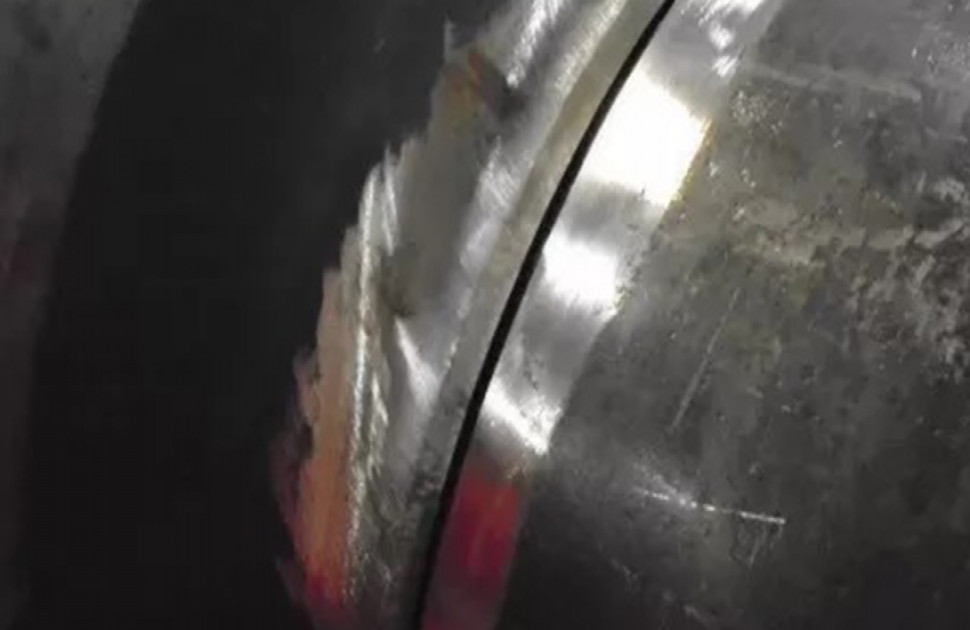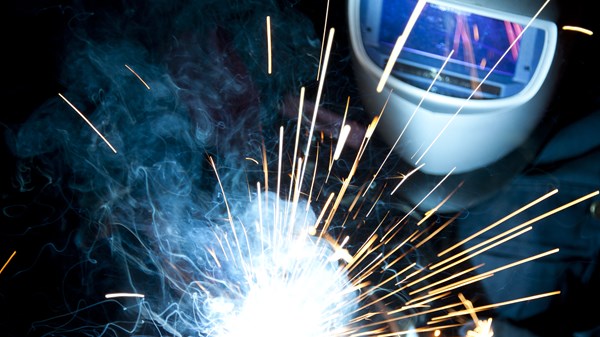Common Issues Found During Welding Inspection Milwaukee and How to Fix Them
Common Issues Found During Welding Inspection Milwaukee and How to Fix Them
Blog Article
Understanding the Value of Welding Inspection in Ensuring Structural Honesty and Security Throughout Different Industries
Welding evaluation is an important process that safeguards structural integrity and safety and security throughout varied sectors. By carefully analyzing weld top quality, assessors help stop flaws that might result in tragic failings. This organized evaluation not only strengthens compliance with market criteria but additionally plays a critical duty in protecting assets and ensuring public safety. The implications of neglecting correct examination techniques are profound, usually resulting in considerable financial and human expenses. As we check out the intricacies of welding evaluation, the inquiry occurs: what are one of the most critical factors that add to reliable inspection processes?
Duty of Welding Assessment
While the honesty of welded frameworks is extremely important to security and performance, the duty of welding inspection can not be overstated. Welding examination offers as an essential quality assurance process that ensures the adherence to established standards and specifications throughout the welding procedure. By methodically reviewing welds for defects, variances, and non-compliance, assessors play a crucial function in securing the integrity of structures throughout numerous sectors.
Welding evaluations incorporate a variety of tasks, from pre-weld evaluations to post-weld assessments. These assessments not only recognize potential problems before they rise yet also enhance the total dependability and lifespan of bonded parts. Welding Inspection Milwaukee. Inspections aid to confirm the skill and competencies of welders, ensuring that welding procedures are executed correctly and products work
Moreover, a strenuous examination protocol cultivates compliance with regulatory requirements and market criteria, reducing the threat of devastating failures. By advertising a society of safety and responsibility, welding examination adds substantially to both economic and operational performances. In amount, the role of welding examination is crucial, as it underpins the top quality, safety, and long life of bonded structures necessary to contemporary infrastructure and industry.
Sorts Of Welding Evaluations
Comprehending the various kinds of welding evaluations is essential for preserving the top quality and security of welded frameworks. Welding examinations can be categorized into a number of kinds, each serving a specific function in the analysis procedure.
Visual evaluation is one of the most fundamental type, entailing a careful exam of the welds with the nude eye or through magnification. This approach assists recognize surface area defects such as fractures, incomplete blend, or extreme spatter.
These approaches permit examiners to evaluate the integrity of welds without endangering the product's framework. Ultrasonic screening utilizes high-frequency audio waves to detect internal problems, while radiographic screening employs X-rays or gamma rays to picture interior weld features.
Devastating screening, though less common, entails physically evaluating samples to recognize the weld's mechanical homes. Each type of inspection adds to a detailed evaluation, guaranteeing that welding meets industry criteria and security requirements.
Sector Criteria and Rules
Developing market standards and guidelines is crucial for making certain the security and dependability of welded structures. These standards work as standards for security, top quality, and efficiency, directing manufacturers and inspectors in the implementation of welding procedures. Various organizations, such as the American Welding Society (AWS) and the International Organization for Standardization (ISO), have actually developed extensive standards that dictate procedures for welding techniques, credentials of welders, and assessment methods.
Compliance with these regulations not only boosts the top quality of welds yet additionally reduces dangers linked with structural failures. Details codes, such as the ASME Central Heating Boiler and Pressure Vessel Code, rundown needs for the building of stress vessels, guaranteeing they can withstand operational anxieties. In addition, local and nationwide regulations commonly mandate adherence to these sector this link criteria, strengthening their importance across markets like construction, aerospace, and automobile manufacturing.
Routine updates to these standards mirror innovations in modern technology and welding strategies, ensuring that precaution remain appropriate. Thus, a thorough understanding and execution of these requirements is essential for welding specialists, fostering a culture of safety and top quality in welded structures.
Consequences of Poor Inspections
Inadequate evaluations can lead to extreme repercussions in the welding market, threatening the very requirements and policies developed to ensure security and architectural stability. The effects of bad inspections can show up in numerous types, from immediate security risks to long-term architectural failures. Among one of the most worrying results is the capacity for devastating accidents, which can lead to substantial injury or death. In markets such as building and construction, aerospace, and production, the ramifications of subpar welding can compromise whole frameworks or elements, bring about expensive fixings and substantial downtime (Welding Inspection Milwaukee).
In addition, inadequate evaluations can stain a company's online reputation and outcome in legal effects, including penalties and lawsuits. Inevitably, the ramifications of bad evaluations prolong beyond private projects, impacting industry-wide requirements and public assumption, hence highlighting the crucial demand for strenuous and efficient welding assessments.
Finest Practices for Effective Inspections
Effective welding evaluations are paramount to ensuring the honesty and safety and security of welded structures. To achieve optimum results, inspectors need to abide by a number of best practices go to this web-site that boost the inspection procedure.

Second of all, examiners ought to have the needed qualifications and accreditations pertinent to the welding procedures and products being examined. Recurring training and specialist development are important to staying upgraded on market standards and technological improvements.
Additionally, using suitable assessment devices and strategies, such as aesthetic examinations, ultrasonic testing, and radiographic evaluations, is crucial for detecting defects that might jeopardize architectural stability.
Finally, extensive documents of the evaluation procedure is necessary. By applying these best techniques, organizations can substantially enhance the efficiency of their welding evaluations and make sure risk-free, reputable procedures.
Verdict

In verdict, welding inspection is important for preserving architectural integrity and safety across numerous sectors. Focusing on effective welding evaluations is essential to make sure the safety of employees, possessions, and total operational integrity.

As we explore the details of welding inspection, the question arises: what are the most critical elements that add to reliable evaluation procedures?
Welding examination serves as a vital quality control process that guarantees the adherence to established requirements and requirements throughout the welding procedure. In amount, the duty of welding evaluation is important, as it underpins the high quality, safety, and durability of welded structures necessary to contemporary infrastructure and market.
Numerous companies, such as the American Welding Culture (AWS) and the International Organization for Standardization (ISO), have actually established extensive criteria that dictate treatments for welding methods, qualification of welders, and assessment methods.
Inevitably, the implications of poor evaluations expand beyond individual tasks, influencing industry-wide criteria and public perception, therefore stressing the essential requirement for strenuous and effective welding inspections.
Report this page